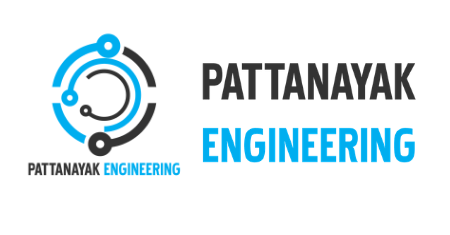Steps to start a successful software development project
Generally, the launching of a project always leaves you unprepared, steps required for successful software development project. You might be on the project team from day one, but the timetable is rigid and there’s not enough time for getting ready. Even worse, you might overlook some steps, and that might come back to haunt you later.
The project starts well, but later after a few months, you end up in a dead-end. Those irritating things that got you frustrated during your previous assignments are back. If all these incidents seem familiar and happened to you before, this blog is important for you.
These steps will help you start a project and set yourself up:
Set-up transparent communication paths
Starting from initial days, make sure that the roles are transparent and everyone knows who handles what. People will request access to external systems, ask for clarifications, or signal emergencies. Whatever may be the framework, make sure that the key contact persons are easily spotted. Keep this information in a familiar location and make it available to everyone.
Define best implementation and protocol
When the project starts, avoid starting coding right away. If you do so, your code-base may become a mess that nobody wants to repair or maintain.
Analyze and spend some time thinking about your past experiences and recognize what went well and what didn’t. It will assist you in define, how you want things to happen for this new project. Gather the entire team in the task and make sure that you listen to what they are saying.
The result should be a list of protocols and best practices verified by the entire team. Follow these conventions and you’ll develop a much more well-organized and logical solution.
Create a meaningful Definition of Done
I know, many times Programmers tend to observe that a feature is done once it works on their local machine. However, a complete software expansion cycle requires much more than that.
This attribute might only work on your local machine or server, so you have to test it on at least another domain. Then, you should ask your squint to review your work. This will make sure that the undertaking criteria and quality standards are being met.
The next move is to add the formation steps so that you can release the feature to the trial environment.
After this, ensure that your team uses the “Definition of Done” as a catalog before they complete a task. This will give you a lot more confidence and trust that a ticket is resolved as what you expect it to be.
Choose a suitable continuous integration system
Continuous integration is crucial for every project. You want to ensure that you can release the new developments with minimal effort. Fortunately, there is a wide range of alternatives available on the market, Jenkins, and Teamcity being two of them. There are a couple of very important factors to take into account when making this choice, though.
One of them is the choice of the team, and the other one is the cost of the tool. It’s always clever to use a continuous integration tool that your team has used before. That means that everyone is friendly with the tool and you won’t need to put in extra effort to learn a new system.
Don’t miss the costing factor, though. If your tool of choice is an expensive one, the project sponsors might not be willing to pay for it. We all know that this happens, but it’s not the end of the world.
A large number of powerful continuous integration tools are free. Take the time to test and analyze them and choose the most suitable one for you.
Choose your tools and applications
One thing that you want to avoid is using multiple tools for attaining the same purpose. Let’s assume that your team has to develop a REST API.
One of your less skilled team members, Kevin, needs some assistance to test an endpoint for user creation. He asks Roger for assistance that is eager to help until he realizes that John is using SOAP UI to test his endpoints. Roger, a big fan of Postman, spends a few minutes trying to understand how to use the tool, but without too much success. He gives up after a few tries, so they decide to reach out to Clark, the most experienced guy on the team.
However, Clark is an old-school programmer. He likes to do everything from the command line, so he asks Kevin to rewrite his API calls to test them with URL. It’s not an ideal situation for anyone.
We know that programmers love to have the freedom to choose their tools, but it’s not always perfect to work that way. In the long run, the team will benefit more from using the same toolset. Try to ignore this kind of situation by selecting specific tools for each purpose.
Don’t make it too complex, listen to the preferences of your team, but make a clear choice. Also, make sure to explain to everyone why this is important and get the buy-in from your peers. After all, you don’t want to be a control freak.
Utilize version control systems wisely
Version control systems are essential for every software project.
You have to devote some time to define how you want the system to be used for your new project. A good starting point is to compare the existing workflows and to decide what is the best one for your use?
Following, you should verify the assignment with your team. If the feedback is positive, chances are that the version control system can be used as planned.
Evade having multiple document management systems
One of the most irritating things is when you need to find a piece of information and you don’t know where to look for it. This generally happens when there are too many places where it could be. It shouldn’t be that complex!
When your guy wants to find the IP of the QA server, he should have to look into a single place. To make this happen, you should pick one good document management system and stick to it.
Keep it in order and confront anyone who attempts to store information outside the system. Everyone will see its advantages in the long run, even the people that get shouted at.
Define the environments
We all know that developers, testers, and business should not use the same environment. But this aspect is usually overlooked during the initial phase of a project.
You should start considering what environments are necessary for your projects early on. Getting approval and setting them up might take a while, so it’s better to start as soon as possible.
As a guideline, you should have at least four environments: development, User acceptance testing (UAT), staging, and production.
User Acceptance Testing Environment
The UAT is intended for user acceptance, so this is where the business people will do their testing.
Staging and Production Environments
Finally, the staging and production come hand in hand and they should match each other. This will make sure that the operations run on staging will have the same results on production.
But each project is different. You might need more environments than the ones above, or you won’t be able to have them all due to the high costs.
Make sure that you consider the system landscape up front and define what you need so that you can deliver the project.
Prepare the code base and project structure
A disciplined code base will go a long way. Start taking a few proactive steps early on, so that your project won’t soon turn into a big ball of mud.
You should define the major modules of the project, code base structure, file naming conventions, packaging rules, and so on.
Make it as inherent as possible, so that is easy for everyone to find the things they are looking for. Also, throwback to the lesson learned from previous projects and make sure you don’t redo the same mistakes again.
Create a document for local project setup
Even if you start with a very small team, chances are that you’re not going to be the only one on the projects. When new developers are about to join, you want to make sure that their life is easy and help them get up to speed in no time.
It has been observed in many cases where the new developer has to spend an entire week to get the project running on his machine. This happens when the setup documentation was poorly written, incomplete, or missing altogether.
To skip this, start with a document that defines all the steps required for the project setup. Then, make sure to test it on your own and filter it.
Next, ask your peers to review the installation steps and include their feedback. You’ll end up with a flexible, easy-to-follow setup guide that will quickly get everyone started.
Conclusion:
If You have any queries you can drop your questions below,
we will be happy to solve your problems.
Thanks for reading…!!!
Pattanayak Engineering
https://pattanayakengineering.com/



